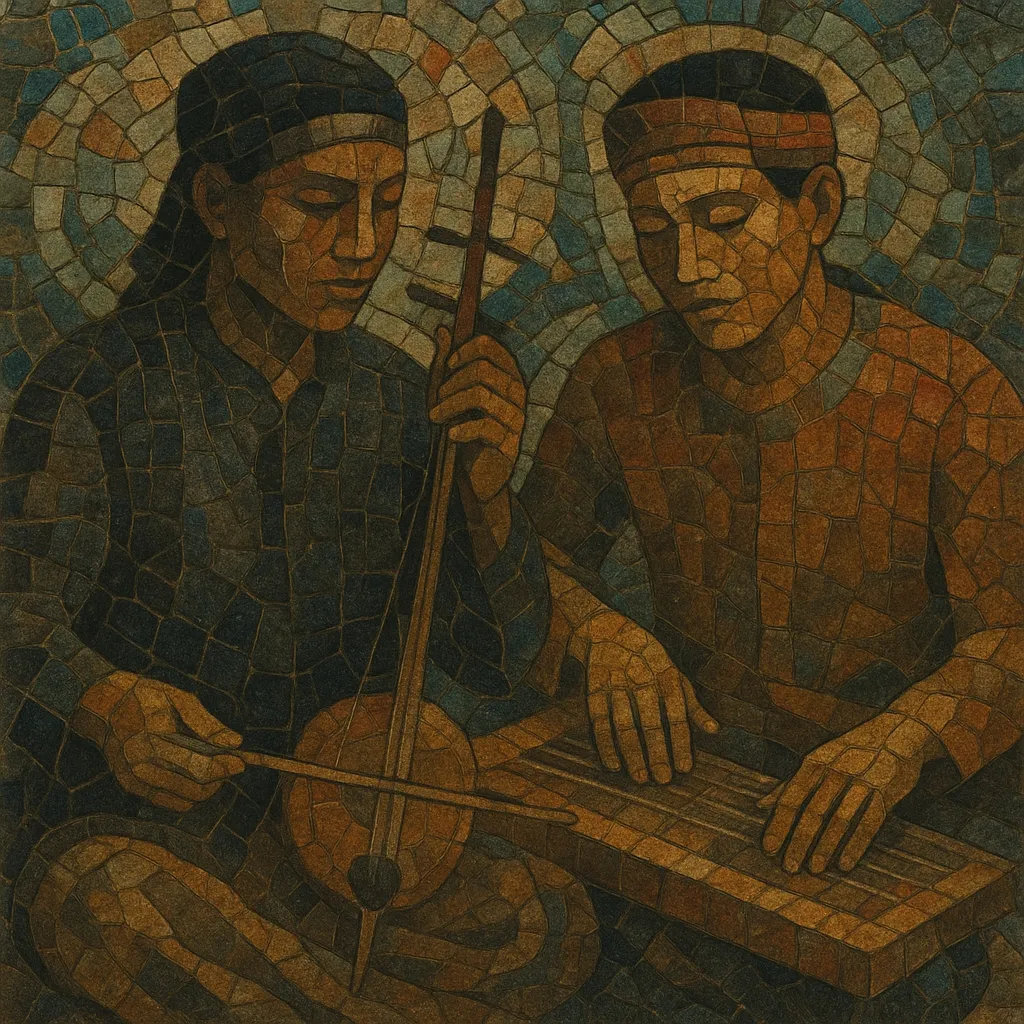Tarawangsa is a ritual music tradition of the Sundanese people of West Java, Indonesia, centered on the bowed two‑string tarawangsa and the plucked zither jentreng. The duo creates a luminous, droning texture in which the tarawangsa intones sinuous, microtonal melodies while the jentreng sustains shimmering ostinatos and drones.
Historically performed for agrarian rites—especially ceremonies honoring Dewi Sri, the rice goddess—tarawangsa is less about virtuosic display and more about sustaining trance, devotion, and communal cohesion. Its modal language draws on Sundanese laras (modes) such as pelog and sorog, with flexible, breath‑like timing and a heterophonic interplay that can feel at once ancient and otherworldly.
The sound is meditative, hovering between melody and drone, with subtle bow inflections, slides, and ornaments that give the music its expressive, floating quality.
Tarawangsa emerged within Sundanese village life in West Java, Indonesia, as a sacred and communal practice associated with agrarian cycles. It is most closely tied to ceremonies venerating Dewi Sri (the rice goddess) and harvest rites in places like Rancakalong (Sumedang). Rather than a concert genre, it functioned as a sonic offering—facilitating trance, reflection, and communal bonding.
The ensemble pairs a bowed two‑string tarawangsa with a plucked jentreng (zither). Its modal palette reflects Sundanese laras such as pelog and sorog, and performance is often in flexible meter, guided by breath and gesture rather than strict pulse. The music’s hallmark is a glowing web of drone, ostinato, and ornamented melody, where heterophony (independent, simultaneous versions of a melody) prevails.
Knowledge was traditionally transmitted orally within families and village ensembles. Through colonial and post‑colonial eras, the practice persisted as a local ritual form, even as urbanization and media shifted listening habits. Documentation by local cultural offices, arts troupes, and ethnomusicologists helped keep the practice visible.
In recent decades, tarawangsa has seen renewed attention. Community ensembles continue ritual functions, while younger artists and festival contexts present the music on stage. Contemporary projects have adapted its drones, modes, and timbral sensibilities into ambient, drone, and experimental frameworks, bringing its ancient poise into dialogue with global listening cultures.


